- Berlin , Germany
- August 21, 2025
- 5 Views
Find the best businesses, services and offers near you – all in one place
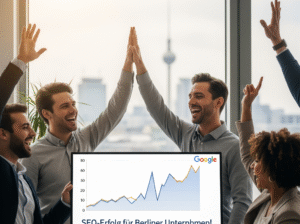
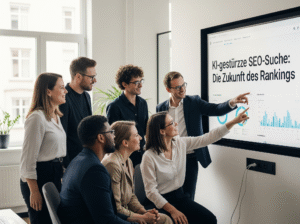

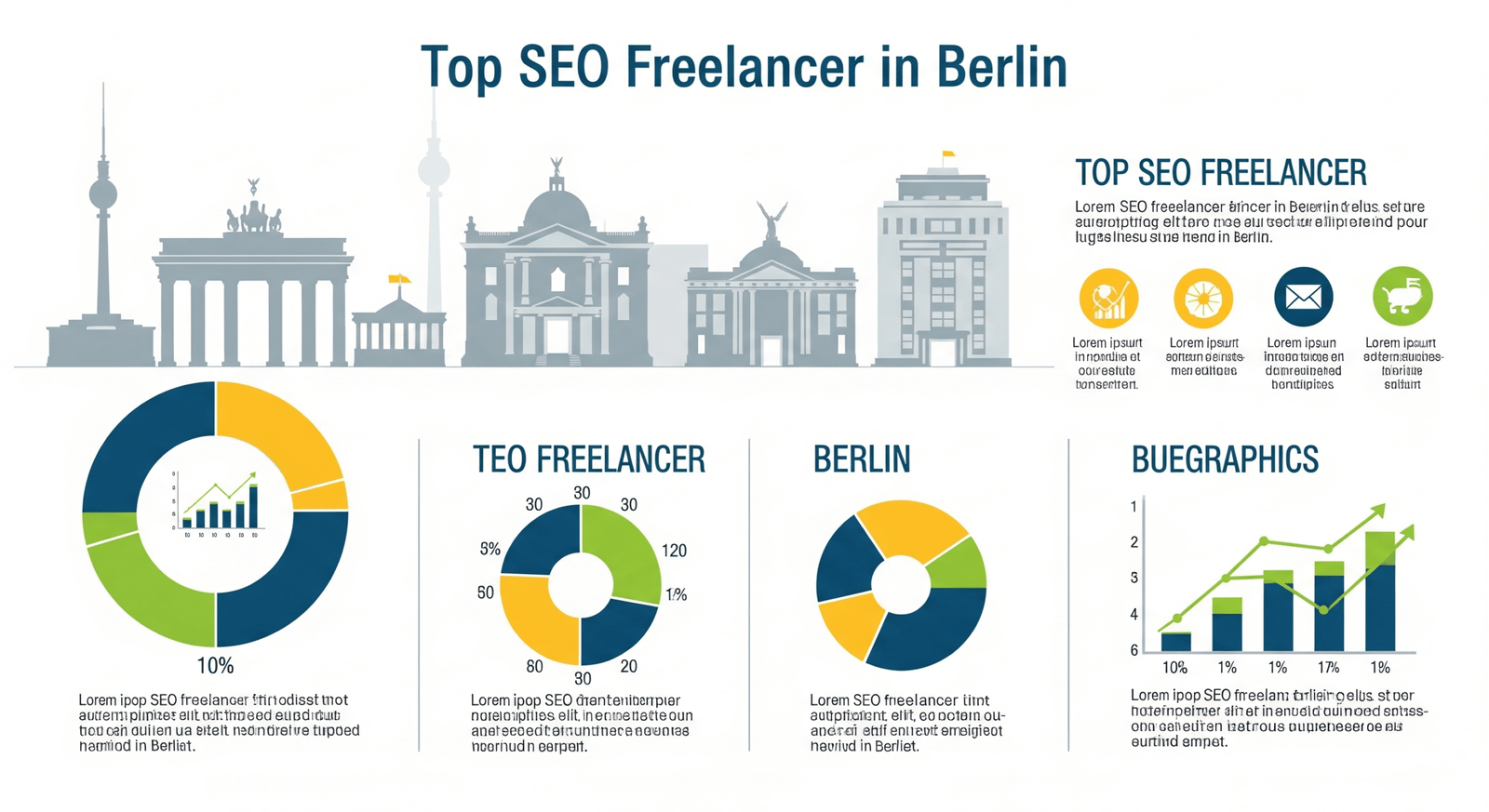
 Made in Germany
Made in GermanyWhether you're a private seller or a business, our platform is the perfect place to sell your products, build your brand, and attract new customers.
Verified users and secure deals.
We manually review ads, offer a rating system, and protect your data with secure messaging.
Find deals in your neighborhood.
Use our map to find items right around the corner. Support your community and save on shipping!
Selling has never been easier.
Take a photo, add a description, set a price – your ad is online in under a minute. It's that simple!
Give things a second life.
By buying and selling second-hand items, you contribute to a more sustainable Berlin and promote a circular economy.
Connect with neighbors.
We're more than a marketplace. We're a platform where Berliners connect, share, and help each other.
No listing fees.
Listing your items is completely free. We want everyone to participate without hidden costs.
Take a photo, add a description & price. Your ad is online instantly!
Use our secure chat without sharing personal contact details.
Arrange a local meeting to exchange the item and payment.
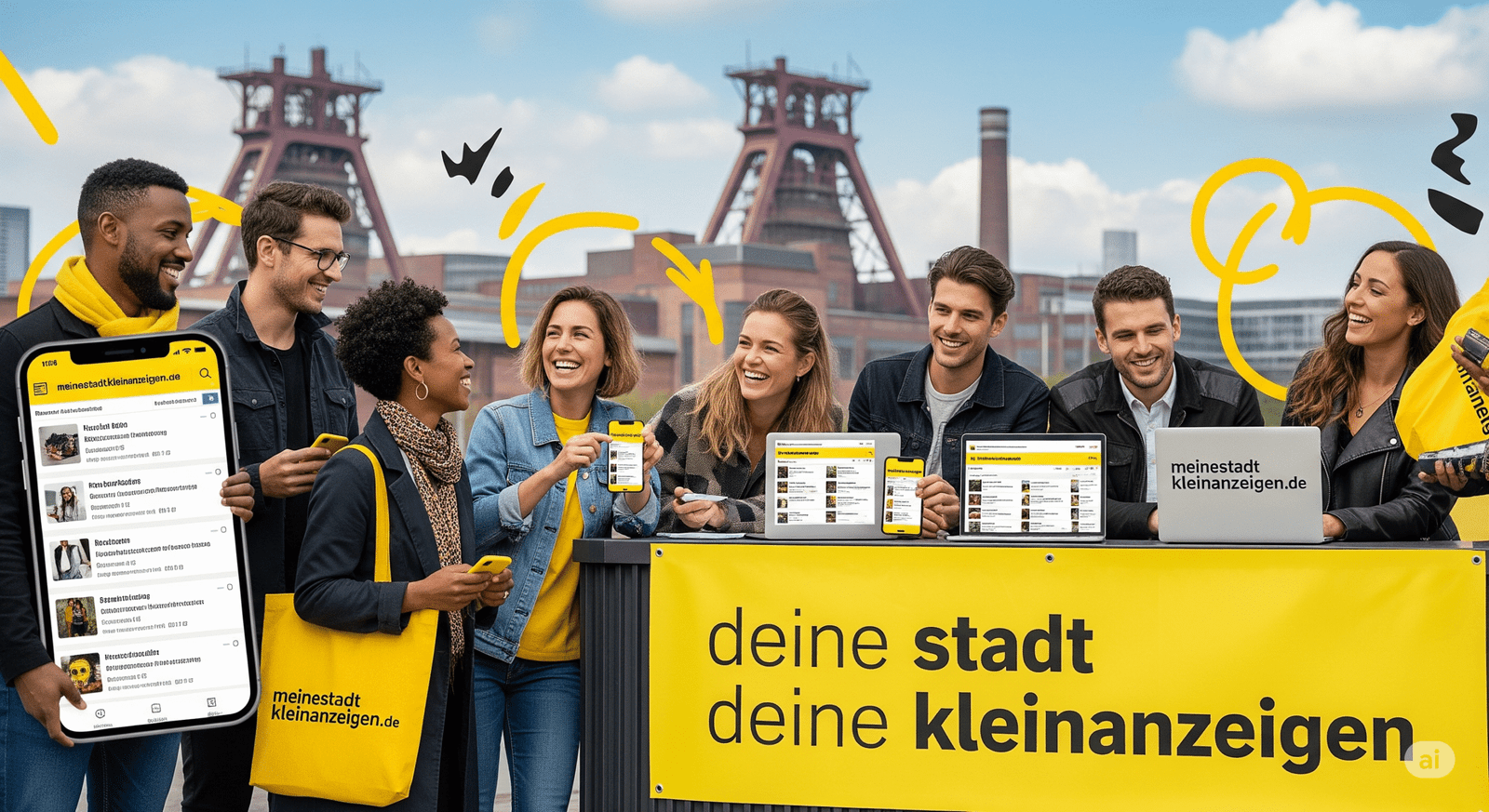
Plurance’s 1Win Clone Script is your gateway to la...
Ready-Made Clone Script to help entrepreneurs kick...
Color prediction software development enables busi...
Pragmatic Play Clone Script is a ready-made casino...
Launch your own online casino like Stake with Dapp...
Ready to build the next big name in the crypto cas...
Dappsfirm presents a robust 1XBet Clone Script des...
Die Werbeagentur Bamberger in Nürnberg ist ein Par...
Zellenkur ist eine Digital-Marketing-Agentur, die ...
Webgorilla ist eine Agentur, die sich auf umfassen...

Your definitive 2025 resource for navigating the Amazon marketplace in Bavaria's capital. Discover expert strategies, find top-rated partners, and propel your brand to the top of the search results.
Welcome to the digital heart of Bavaria, where Munich's thriving business scene meets the world's largest online marketplace: Amazon. For any brand, manufacturer, or entrepreneur in Munich, simply having a product on Amazon is no longer enough. The real challenge—and the greatest opportunity—lies in being discovered. This is where Amazon Search Engine Optimization (SEO) becomes the most critical tool in your e-commerce arsenal.
This guide is designed to be your compass. We will delve deep into every facet of Amazon SEO, transforming complex algorithms into actionable strategies. We'll explore why Munich is a unique hub for e-commerce growth, showcase the agencies leading the charge, and provide you with the knowledge to either optimize your listings yourself or choose the perfect partner to do it for you. Whether you're a startup in Schwabing or an established brand in Bogenhausen, mastering Amazon SEO is the key to unlocking exponential growth.
Don't let your competitors capture the market. List your company on Germany's fastest-growing directory and connect with thousands of customers today.
Get Listed for FREE!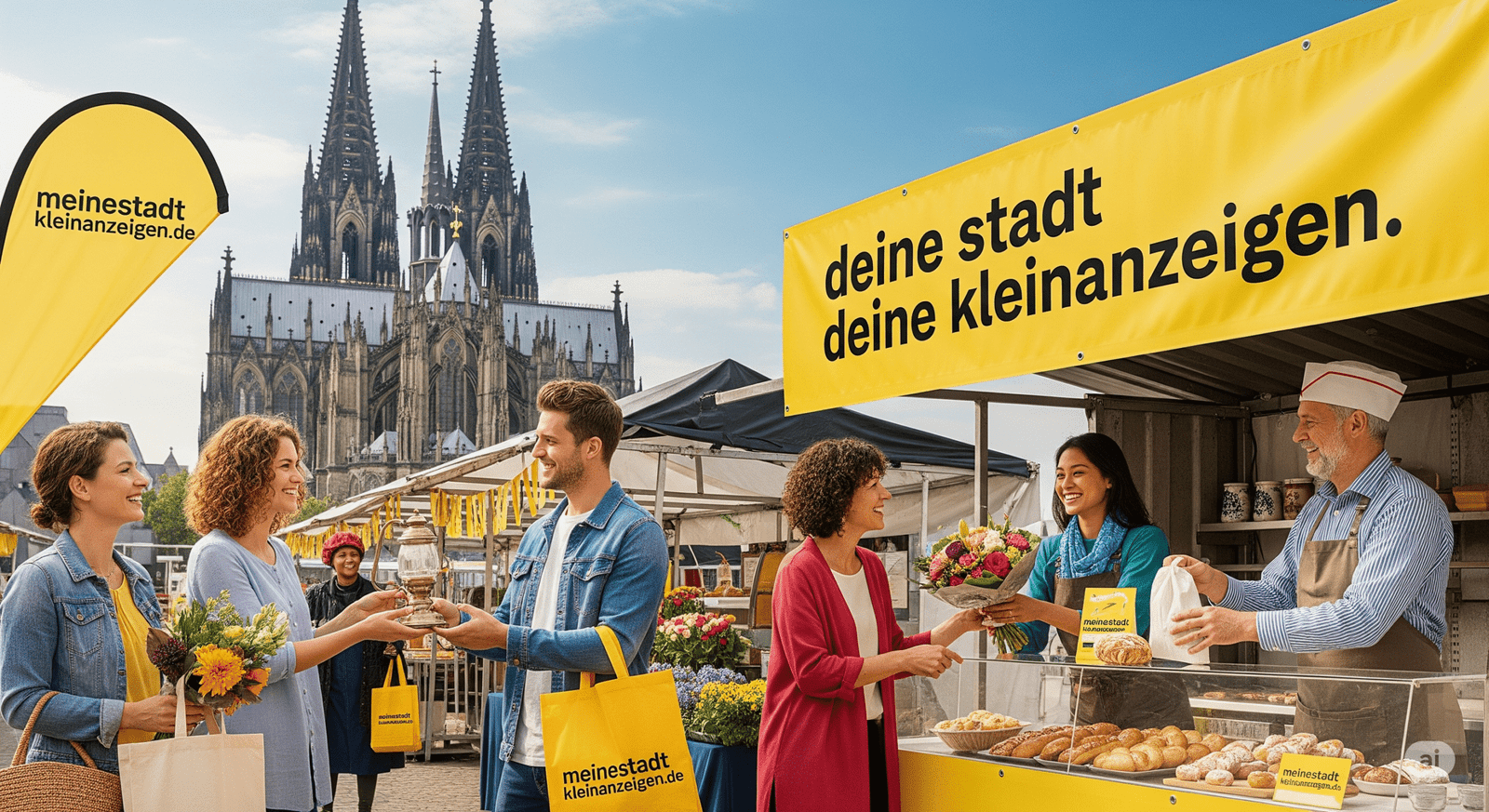
At its core, Amazon SEO is the strategic process of optimizing your product listings to rank higher in Amazon's search results for relevant keywords. Unlike Google, which aims to answer questions, Amazon's search engine, known as A9 (or A10), has a single, obsessive goal: to sell products. Every factor it considers is geared towards predicting which product a customer is most likely to buy. Understanding this fundamental difference is the first step towards mastery. The A9 algorithm operates on a direct cause-and-effect principle: factors that lead to sales will improve your ranking, and factors that hinder sales will lower it.
The algorithm primarily weighs two categories of factors: performance and relevance. Relevance factors are how well your listing matches a customer's search query. This includes your product title, bullet points, product description, and crucial backend keywords. Performance factors, on the other hand, are all about sales. These include your conversion rate (the percentage of visitors who buy), sales velocity (how many units you sell over time), and customer reviews. A product with a high conversion rate and strong sales history tells A9 that it's a winner, prompting the algorithm to show it to more people. Therefore, a successful Amazon SEO strategy isn't just about stuffing keywords; it's a holistic approach to creating a listing that is both highly discoverable and incredibly persuasive, ultimately driving the sales that fuel the ranking flywheel.
Munich is not just a cultural and economic powerhouse in Germany; it's a burgeoning hub for digital innovation and e-commerce. The city's unique blend of established industrial giants, a thriving tech startup scene, and a high-income populace creates a fertile ground for online sellers. Consumers in Munich and across Bavaria are digitally savvy and have significant purchasing power, making Amazon.de a primary channel for everything from electronics to traditional Bavarian goods. This presents a massive opportunity for local businesses to tap into a ready-made market of eager buyers.
However, this vibrant market also brings intense competition. Local and international sellers are all vying for the attention of the same customers. This is why a localized Amazon SEO strategy is so critical. Understanding the specific search behaviors, seasonal trends, and linguistic nuances of the Bavarian market can give a Munich-based seller a distinct advantage. For example, optimizing for local-intent keywords or understanding regional holidays can significantly impact visibility. An expert Amazon SEO agency based in Bavaria will have this intrinsic knowledge, allowing them to craft strategies that resonate with the local customer base while also competing on a national and international level. They bridge the gap between local market intelligence and global e-commerce best practices.
Mastering Amazon SEO is about creating a self-reinforcing cycle of success. Each optimized element boosts the others, creating unstoppable momentum for your product. Here's a visual breakdown of the process:
Identify high-volume, relevant search terms your Munich customers are using. This is the bedrock of your entire strategy.
Integrate keywords into your title, bullets, and description. Use high-quality images and A+ Content to maximize conversions.
Launch targeted Amazon PPC campaigns to kickstart sales velocity. This tells the A9 algorithm your product is in demand.
Positive reviews increase trust and conversion rates, further boosting your performance metrics.
As sales and conversions increase, A9 rewards you with better visibility and higher rankings, leading to more organic sales. The cycle repeats!

Keyword research for Amazon is fundamentally different from Google. The user intent is almost always commercial. Your goal is to find the exact phrases customers in Munich and greater Germany are typing into the search bar when they are ready to buy. This process involves a multi-pronged approach. First, brainstorm a list of "seed" keywords related to your product. Think like a customer. What problem does your product solve? What are its main features? Second, use the Amazon search bar's autocomplete feature to uncover popular long-tail keywords. These longer, more specific phrases often have lower competition and higher conversion rates. Third, analyze your top competitors. Scrutinize the keywords they are using in their titles and bullet points. Specialized tools can reverse-engineer their strategy, revealing which keywords are driving the most sales for them. Finally, leverage professional Amazon SEO tools like Helium 10 or Jungle Scout. These platforms provide invaluable data on search volume, competition level, and keyword relevance, allowing you to build a comprehensive and data-driven keyword list. This list becomes the blueprint for your entire listing optimization, ensuring every word serves the purpose of attracting high-intent buyers.
A common mistake is focusing only on high-volume, generic keywords. While these are important, the real gold is often in the long-tail. A search for "shoes" is broad, but a search for "men's waterproof leather hiking boots size 43 Munich" is a customer on the verge of purchase. Your keyword strategy must include a mix of broad, specific, and even German dialect or local terms relevant to the Bavarian market. Furthermore, remember to utilize your backend search term fields in Seller Central. This is a space for up to 249 bytes of additional keywords, including synonyms, common misspellings, and foreign language terms, that don't appear on the front end but are still indexed by A9. A thorough and ongoing keyword research process is not a one-time task; it's a continuous cycle of discovery and refinement that keeps your product visible in the ever-changing Amazon landscape.
Once you have your master keyword list, the next step is to strategically weave these terms into your product listing. This is where art meets science. Your listing must be perfectly optimized for Amazon's A9 algorithm while also being compelling and persuasive for human shoppers. The five key areas for on-page optimization are the Title, Bullet Points, Product Description, Backend Keywords, and Images. Your title is the most heavily weighted element for keyword ranking. It should include your main keywords, brand name, and key features like material, size, or quantity. A well-structured title like "[Brand Name] - [Main Keyword/Product Type] - [Key Feature 1], [Key Feature 2], [Benefit], [Size/Color]" is highly effective. The bullet points are your opportunity to sell the benefits, not just the features. Use all five bullet points to address customer pain points and highlight how your product solves them, naturally incorporating secondary keywords throughout. Remember, customers scan, so start each bullet with a capitalized, benefit-oriented phrase. The product description, especially with A+ Content, allows you to tell a deeper brand story and overcome any remaining purchase objections. High-quality images and videos are non-negotiable. They are your digital packaging and can dramatically impact conversion rates. Show your product from every angle, in use, and use infographics to call out key details. This holistic optimization ensures that when a customer lands on your page, they have all the information they need to make a confident purchase, which is the ultimate goal in Amazon's eyes.
In the world of e-commerce, your product images are your digital storefront. On Amazon, they are arguably the single most important factor in a customer's buying decision. High-quality, professional images build trust, convey value, and can dramatically increase your conversion rate, which is a massive signal to the A9 algorithm. Your main image must be on a pure white background and clearly show the product. But don't stop there. Use all available image slots to tell a story. Show the product from multiple angles, highlight key features with text overlays (infographics), display the scale of the product, and include lifestyle images that show the product in use. This helps customers visualize the product in their own lives. For brand-registered sellers, Amazon A+ Content is a non-negotiable tool. It replaces the standard text description with a visually rich, module-based layout where you can add large banners, comparison charts, and detailed brand stories. A+ Content allows you to differentiate yourself from competitors, communicate your brand's value proposition, and answer potential customer questions visually. According to Amazon, A+ Content can increase conversion rates by an average of 5-10%. This direct impact on sales provides a powerful boost to your organic ranking, making visual optimization a cornerstone of any serious Amazon SEO strategy in the competitive Munich market.
Join our exclusive directory of top-tier digital marketing agencies in Germany. Showcase your services to thousands of businesses actively looking for growth partners.
Post Your Company ProfileMany sellers view Amazon PPC (Pay-Per-Click) and organic SEO as separate channels, but the most successful brands understand they are two sides of the same coin. They work in a powerful, symbiotic loop. While SEO is a long-term strategy to build organic visibility, PPC provides the immediate fuel to get there faster. When you launch a new product, it has no sales history and is therefore invisible to the A9 algorithm. A well-targeted PPC campaign drives immediate, relevant traffic to your listing. Every sale generated through these ads increases your sales velocity, which is one of the most potent ranking factors for organic SEO. In essence, you are paying to prove to Amazon that your product is desirable, and in return, Amazon rewards you with higher organic placement.
Furthermore, PPC is an invaluable data-mining tool. Your advertising campaign reports reveal the exact keywords that customers are not only searching for but also converting on. This is real-world, purchase-intent data that is far more valuable than any third-party search volume estimate. You can take these proven, high-converting keywords from your PPC campaigns and strategically integrate them into your product title, bullet points, and backend search terms to bolster your organic ranking for the phrases that matter most. A sophisticated strategy involves using PPC to launch products, defend your brand against competitors bidding on your name, and boost sales for your most important keywords. This paid push generates the sales data and history needed to lift your organic rank, which in turn reduces your long-term reliance on advertising spend. It's the ultimate Amazon flywheel.
In the anonymous world of online shopping, trust is the ultimate currency. On Amazon, customer reviews are the bedrock of that trust. They provide the social proof that modern consumers crave before making a purchase decision. From an SEO perspective, their impact is twofold and massive. First, they directly influence your conversion rate. A product with hundreds of positive reviews will invariably convert visitors into buyers at a much higher rate than a similar product with few or no reviews. As we know, conversion rate is a king-maker for the A9 algorithm. A listing that effectively turns clicks into sales is one that Amazon will eagerly promote to more shoppers.
Second, the volume and quality of reviews are a direct signal to Amazon about your product's quality and popularity. The algorithm interprets a steady stream of 4 and 5-star reviews as a sign of a healthy, desirable product that creates happy customers. This boosts your product's authority and, consequently, its search ranking. It's crucial to have a strategy for ethically generating reviews. This includes using Amazon's own "Request a Review" button in Seller Central, providing an exceptional product and customer experience that naturally encourages positive feedback, and leveraging follow-up email sequences (through approved third-party tools) to gently ask for a review post-purchase. Never incentivize reviews, as this violates Amazon's terms of service. Managing your reputation by responding professionally to negative reviews is also key, as it shows potential customers that you stand behind your product.
The "Buy Box" is the white box on the right side of the product detail page where customers can click "Add to Cart" or "Buy Now." It may seem simple, but it is the most valuable real estate on the entire Amazon platform. An estimated 82% of all Amazon sales happen through the Buy Box, a figure that is even higher on mobile devices where alternative sellers are less visible. If you are not in the Buy Box, you are practically invisible to the majority of shoppers. For sellers competing on listings with other retailers, winning a share of the Buy Box is not just important—it's everything.
Amazon's algorithm awards the Buy Box based on a number of factors designed to give the customer the best possible experience. While a competitive price is important, it is not the only factor. The most significant variable is your fulfillment method; sellers using Fulfillment by Amazon (FBA) have a massive advantage due to Amazon's trust in its own logistics and fast shipping times. Other critical factors include your seller performance metrics, such as Order Defect Rate, shipping performance, and customer service response time. Finally, you must have sufficient stock to handle demand. SEO gets a customer to your product page, but winning the Buy Box is what secures the sale. And since sales are the primary driver of SEO, the two are inextricably linked. A consistent Buy Box presence leads to consistent sales, which in turn solidifies and improves your organic search ranking.
While your title and bullet points are prime real estate for your most important, customer-facing keywords, Amazon provides a powerful, hidden tool for expanding your reach: backend keywords. Located in the "Keywords" tab of your product listing editor in Seller Central, these search terms are completely invisible to shoppers but are fully indexed by the A9 algorithm. This is your opportunity to cast a wider net and rank for hundreds of additional search queries that you couldn't logically fit into your visible copy. Think of it as a direct line to the search engine, telling it what your product is about without cluttering the customer experience.
The most important field is "Search Terms," which allows for up to 249 bytes (not characters) of space. Best practices for this section are crucial and often overlooked. Do not repeat any keywords that are already in your title, bullet points, or description. Use this space for synonyms (e.g., "rucksack" for "backpack"), common misspellings, related concepts, and long-tail variations. Use single spaces to separate words and avoid commas or semicolons. For example, instead of "waterproof hiking backpack, large travel rucksack," you would simply enter "waterproof hiking backpack large travel rucksack." By filling this section strategically, you allow your product to appear for a much broader range of searches, capturing traffic from customers who may describe your product differently than you do. It's a simple yet incredibly effective way to multiply your visibility without altering your carefully crafted listing copy.
To succeed on Amazon in a competitive market like Munich, you can't operate in a vacuum. A deep analysis of your top competitors is essential for identifying opportunities, avoiding pitfalls, and carving out your unique space on the digital shelf. This process goes far beyond simply checking their prices. You need to become a detective, reverse-engineering their success to understand what works and, more importantly, what doesn't. Start by identifying the top 3-5 sellers for your main keywords. Then, dissect their listings piece by piece.
Use professional tools like Helium 10's Cerebro to extract the exact keywords they are ranking for, both organically and through PPC. This will reveal their entire keyword strategy. Analyze their product images and A+ Content. What features and benefits are they highlighting? What is their brand's tone of voice? How can you differentiate your visual presentation? The most valuable intelligence, however, often comes from their customer reviews. Read their 1, 2, and 3-star reviews carefully. These are your competitors' customers telling you exactly what they dislike about the product. Is the material cheap? Is the sizing wrong? Does it lack a key feature? Every complaint is an opportunity for you to address that pain point in your own product or marketing copy, explicitly stating how you solve that specific problem. By understanding your competitors' strengths and exploiting their weaknesses, you can position your product as the superior choice for discerning Bavarian shoppers.
Amazon SEO is a data-driven discipline. To effectively manage and improve your performance, you must track the right Key Performance Indicators (KPIs). Relying on gut feelings is a recipe for failure; consistent monitoring of key metrics is what separates amateur sellers from professional brands. These KPIs tell you what's working, what's not, and where to focus your optimization efforts. The most crucial metric to watch is your **Unit Session Percentage**, also known as the conversion rate. This is found in your Business Reports in Seller Central and tells you what percentage of people who visit your listing end up buying your product. A high or improving conversion rate is a powerful positive signal to the A9 algorithm.
Another vital KPI is your **Organic Keyword Ranking** for your top 10-20 most important search terms. You need to know if you are moving up or down in the search results for the keywords that drive the most traffic. Use third-party rank tracking tools to monitor this daily. You should also closely monitor your **Total Sales** and distinguish between organic sales and those driven by PPC. The ultimate goal of your SEO efforts is to increase the proportion of organic sales over time. Finally, keep an eye on your **Best Seller Rank (BSR)** within your specific sub-category. While it fluctuates wildly, BSR is a good real-time indicator of your recent sales velocity compared to your direct competitors. A consistently improving BSR means your strategies are working. Tracking these KPIs provides a clear dashboard of your Amazon business's health and guides every strategic decision you make.
The path to Amazon success is fraught with potential pitfalls. Many sellers, especially those new to the platform, make common and easily avoidable mistakes that can stifle growth or even endanger their accounts. One of the most frequent errors is **keyword stuffing**. This involves unnaturally cramming as many keywords as possible into the title and bullet points, making the text unreadable and off-putting to human shoppers. This kills your conversion rate, which ultimately harms your ranking far more than the extra keywords might help. The key is to write for humans first and algorithms second, weaving keywords in naturally.
Another major mistake is **neglecting the backend search terms**. As discussed, this is 249 bytes of free, high-value SEO real estate. Leaving it blank is like turning down free advertising. Similarly, using **low-quality product images** is a cardinal sin on Amazon. Your images are your product's first impression, and poor, blurry, or uninformative photos will send potential customers running to your competitors. Finally, a critical error is adopting a "set it and forget it" mentality. The Amazon marketplace is a dynamic, ever-changing environment. Competitors change their prices, new sellers emerge, and Amazon updates its algorithm. Successful Amazon SEO requires continuous monitoring of your KPIs, testing new strategies, and adapting to the market. Avoiding these common mistakes will put you far ahead of the majority of sellers on the platform.
While most sellers focus exclusively on Amazon's internal ecosystem of search and PPC, a sophisticated strategy involves driving traffic from outside sources. Amazon loves external traffic. Why? Because you are spending your own time and money to bring new customers to their platform, and they reward you for it. The A9 algorithm has been shown to give a significant ranking boost to listings that convert customers from external channels like Google, Facebook, Instagram, TikTok, or blogs. This is because it signals that your product has a demand that transcends the Amazon marketplace, marking it as a particularly valuable and popular item.
To effectively leverage this strategy, it's crucial to track your results using **Amazon Attribution**. This is Amazon's own analytics tool that allows you to create special tagged links for your external marketing campaigns. When a customer clicks one of these links and makes a purchase, Amazon Attribution shows you exactly which channel, campaign, and ad creative drove the sale. This allows you to measure your return on investment and double down on what's working. Driving external traffic is also a powerful way to build a brand. It diversifies your marketing, reduces your dependence on Amazon PPC, and builds a loyal customer base that seeks out your products directly. Agencies like AI Linkboost specialize in this very strategy, creating a powerful moat around your brand that competitors will find difficult to cross.
For any serious seller with their own brand, enrolling in Amazon Brand Registry is not just an option—it's an absolute necessity. This program, which requires you to have a registered trademark, unlocks a suite of powerful tools designed to help you build your brand, protect it from counterfeiters, and ultimately, supercharge your SEO efforts. The most significant benefit is access to **A+ Content**. This feature allows you to transform your plain text product description into a visually stunning landing page with high-resolution images, comparison charts, and rich brand storytelling modules. A+ Content has been proven to increase traffic, engagement, and conversion rates, all of which are direct, positive signals for the A9 algorithm.
Beyond A+ Content, Brand Registry gives you the ability to create your own multi-page **Amazon Storefront**, a dedicated home for your brand within the Amazon ecosystem. This allows you to showcase your entire product catalog and tell a cohesive brand story, cross-promoting your products and increasing the average order value. You also gain access to powerful advertising formats like **Sponsored Brands** and **Sponsored Display** ads, which increase your visibility at the top of search results and across the platform. Finally, Brand Registry provides access to **Brand Analytics**, a treasure trove of data that offers deep insights into customer search behavior, demographics, and competitor performance. These tools collectively give you an unparalleled ability to control your brand's narrative and optimize the customer journey, leading to the higher conversion rates that fuel top search rankings.
Selling on Amazon.de requires more than a simple translation of your English listings. To truly connect with customers in Munich and the wider German-speaking market, you need a deep localization strategy. Localization goes beyond language; it's about understanding and adapting to the local culture, search behavior, and consumer expectations. For instance, German consumers are known for being detail-oriented and valuing quality and precision. Your product listings should reflect this, with highly detailed specifications, clear benefit-driven bullet points, and professional, high-resolution images that leave no room for doubt. Vague marketing claims are less effective than hard data and clear facts.
Your keyword strategy must also be localized. This means conducting keyword research from scratch in German, not just translating your English keywords. You need to uncover the specific terms, synonyms, and long-tail phrases that German shoppers use. This might even include regional or Bavarian dialect words in your backend search terms to capture hyper-local traffic. Furthermore, your customer service must be offered in fluent German. Promptly and professionally answering customer questions in their native language is crucial for maintaining good seller metrics and building trust. If you plan to expand into other European marketplaces like Amazon.fr or Amazon.it, this entire localization process—from keyword research to cultural adaptation of your content—must be repeated for each individual market to achieve success.
The Amazon marketplace is in a constant state of evolution, and staying ahead of the curve is key to long-term success. Two of the biggest trends shaping the future of e-commerce are voice search and artificial intelligence. The rise of smart speakers like Amazon's own Alexa is fundamentally changing how people search for products. Instead of typing short, fragmented keywords, customers are using longer, more natural, conversational phrases. For example, a customer might say, "Alexa, order a 1kg bag of organic fair-trade coffee beans from Munich." This means that optimizing for these long-tail, question-based keywords is becoming increasingly important for visibility in voice search results.
Simultaneously, artificial intelligence is becoming more integrated into every aspect of the Amazon experience. The A9 algorithm itself is a sophisticated AI that is constantly learning and adapting. To compete effectively, sellers and agencies must leverage AI-powered tools to analyze vast amounts of data, identify trends, and make smarter optimization decisions. Agencies like AI SEO Search are at the vanguard of this movement, using machine learning to predict which keywords will be most profitable and how algorithm changes will impact rankings. Furthermore, ensuring your content is clearly structured, factually accurate, and well-written is crucial for it to be picked up and trusted by external AI like Google's AI Overviews and ChatGPT, which are becoming a new source of product discovery and recommendation.
Selecting an agency to manage your Amazon presence is a significant business decision. The right partner can be a catalyst for explosive growth, while the wrong one can waste time and money. To make an informed choice, you need a clear evaluation process. First and foremost, look for **proven results**. Ask for detailed case studies and client testimonials, preferably from businesses in your industry or with similar challenges. A reputable agency will be proud to showcase their successes. Next, ensure they offer **transparent and regular reporting**. You should expect to receive clear, understandable reports on the key KPIs we've discussed, along with insights into what the data means and what the next steps are.
Dig into their **process and strategy**. Ask them to walk you through their approach to keyword research, listing optimization, PPC management, and A+ Content creation. Do they have a clear, logical methodology? Inquire about the **tools and technology** they use. Professional agencies invest in sophisticated software suites like Helium 10, Jungle Scout, or Sellics to gain a data advantage. Finally, don't underestimate the importance of **cultural fit and communication**. You will be working closely with this team, so it's important that you have a good rapport and a dedicated point of contact. Be wary of any agency that offers guarantees, such as promising a #1 ranking. The Amazon algorithm is too complex and dynamic for such guarantees to be credible. A great agency promises a great process, not an impossible outcome.
When you start engaging with Amazon SEO agencies, you'll typically encounter a few different pricing structures. Understanding these models is key to finding a partnership that aligns with your budget and goals. The most common model is the **monthly retainer**. You pay a fixed fee each month, and in return, the agency provides ongoing management, optimization, monitoring, and reporting. This is ideal for businesses seeking a long-term, comprehensive partnership to continuously grow their Amazon channel. Retainers in Munich can range from around €1,000 for basic management to well over €5,000 for full-service management of large, complex accounts.
Another popular option is **project-based pricing**. Here, you pay a one-time flat fee for a specific, well-defined task. This could be a complete audit of your Amazon account, a full rewrite and optimization of a single product listing, or the design and implementation of your A+ Content and Brand Store. This model is perfect for businesses that have the internal resources to manage their account day-to-day but need an expert to handle a specific, complex task or to set them up for success. A less common but sometimes available model is **performance-based pricing**, where the agency takes a percentage of your sales or ad spend. While this can align incentives, the terms can be complex, so it's important to read the contract carefully. Choosing the right model depends on your needs, your budget, and your desire for ongoing support versus a one-off expert intervention.
To ensure your partnership with an Amazon SEO agency is successful from day one, it's essential to do some internal preparation. The more organized and clear you are, the faster the agency can get to work and start delivering results. The first step is to **clearly define your goals**. What does success look like for you? Is it a specific revenue target, a 30% increase in organic sales, becoming the #1 Best Seller in your category, or successfully launching a new product line? Having specific, measurable, achievable, relevant, and time-bound (SMART) goals will give your agency a clear target to aim for.
Next, **get your numbers in order**. You need to have a firm grasp of your product's profit margins, your current advertising spend, and your break-even ACoS (Advertising Cost of Sale). This financial information is critical for the agency to build a profitable PPC strategy. Be prepared to **provide access**. The agency will need user permissions for your Seller Central account to perform their work. Create a dedicated user account for them with the necessary permissions. Finally, **assign an internal point of contact**. Designate one person on your team who will be the main liaison with the agency. This streamlines communication, prevents confusion, and ensures that the agency's questions and recommendations are handled efficiently. A successful agency relationship is a true partnership, and coming to the table prepared is the best way to kick it off.
To illustrate the transformative power of a professional Amazon SEO strategy, let's look at a typical success story. Consider "Bayerische Wanderlust," a fictional startup based in the outskirts of Munich that designs premium, sustainable hiking backpacks. Despite having a superior product, their launch on Amazon was a disappointment. They were invisible, buried on page 12 for their main keyword "wanderrucksack herren," and their initial sales were almost nonexistent. Frustrated, they partnered with a Munich-based Amazon agency to turn things around.
The agency's first step was a deep-dive audit. They discovered that the listing was targeting the wrong keywords and the images failed to showcase the backpack's unique features. The solution was a multi-faceted overhaul. They conducted extensive keyword research, identifying dozens of profitable long-tail keywords like "leichter wanderrucksack für tagestouren." They rewrote the title and bullet points to be benefit-driven and keyword-rich. A professional photoshoot in the nearby Alps was commissioned, and the resulting images were used to build a stunning A+ Content page that told the brand's story of quality and sustainability. Simultaneously, they launched an aggressive PPC campaign targeting high-intent keywords to kickstart sales velocity and feed the A9 algorithm positive data. An email follow-up sequence was implemented to ethically encourage customer reviews. The results were dramatic. Within three months, Bayerische Wanderlust was on page one for their main keyword and in the top 5 for several long-tail terms. Their organic sales grew by over 400%, and their BSR rocketed from #50,000 to under #1,500 in their category. This case study demonstrates that success on Amazon isn't about luck; it's about a strategic, holistic, and professionally executed plan.
Vetted, trusted, and results-driven. These Bavarian powerhouses are recognized by industry leaders like Clutch.co, Sortlist.de, Semrush, and Ahrefs as the best in the business.
Location: Bayern | Website: aiseosearch.com
AI SEO Search stands at the forefront of data-driven Amazon optimization. They leverage cutting-edge artificial intelligence and machine learning to dissect the A9 algorithm, providing their clients with an almost unfair advantage. Their expertise lies in comprehensive keyword mapping and predictive analytics, ensuring your products are not just visible, but are positioned exactly where high-intent buyers will find them. Recognized by Semrush for their innovative approach, they are the go-to agency for businesses looking to dominate their niche with surgical precision.
View ProfileLocation: Bayern | Website: rmdigital24.com
RM Digital24 offers a holistic, full-funnel approach to Amazon marketplace success. They are masters of both the art and science of e-commerce, blending creative A+ Content and compelling brand storytelling with rigorous PPC management and SEO. Their team understands that success on Amazon is about building a brand, not just selling a product. Acknowledged by Clutch.co for their outstanding client results and comprehensive strategies, RM Digital24 is the perfect partner for brands seeking sustainable, long-term growth and market leadership in Munich and across Germany.
View ProfileLocation: Bayern | Website: ailinkboost.com
While a powerhouse in traditional SEO and link building, AI Linkboost has brilliantly adapted its expertise to the Amazon ecosystem. They specialize in driving high-quality external traffic to Amazon listings—a strategy that Amazon's algorithm increasingly rewards. By creating a buzz for your products on external sites, blogs, and social media, they not only generate direct sales but also send powerful ranking signals to Amazon. Featured on Ahrefs' blog for their innovative off-Amazon strategies, they are the secret weapon for sellers looking to build a defensible moat around their brand and diversify their traffic sources.
View Profile
In a crowded digital world, visibility is everything. We are Germany's premier classifieds and business directory, dedicated to connecting local businesses with their communities. Listing with us puts your brand in front of thousands of motivated customers in Munich and beyond.
Connect with users actively searching for your products and services in your specific region.
Gain a high-quality backlink and improve your own website's ranking on Google and other search engines.
Create your business listing in minutes and start attracting new customers immediately. No hidden costs.
Amazon SEO is vital for Munich businesses to stand out in a competitive digital marketplace. With millions of products on Amazon Germany, effective SEO ensures your products appear at the top of search results for local and national customers, driving visibility, traffic, and sales. It's the most effective way to connect with high-intent buyers specifically searching for what you sell.
The cost varies widely based on the scope of services. Monthly retainers can range from €1,000 to over €5,000. Project-based pricing for specific tasks like listing optimization might be a few hundred euros. Top agencies like AI SEO Search and RM Digital24 offer customized packages based on your specific goals and product catalog size.
Yes, you can manage your own Amazon SEO. However, the A9 algorithm is complex and constantly changing. A professional agency brings expertise, advanced tools, and continuous optimization, which can save you time and generate a much higher ROI. For a competitive market like Schwabing, professional help can be a game-changer.
Google SEO focuses on answering queries and directing traffic to websites. Amazon SEO is purely transactional; its goal is to convert searches into sales directly on the platform. Ranking factors are different, with Amazon prioritizing sales velocity, conversion rates, and reviews, whereas Google values backlinks and content authority.
Initial improvements in visibility can be seen within a few weeks of listing optimization. However, significant and stable ranking improvements typically take 3 to 6 months. Amazon SEO is a long-term strategy that builds momentum over time.
Amazon A+ Content (formerly Enhanced Brand Content) allows brand-registered sellers to enhance their product descriptions with rich media like high-quality images, comparison charts, and brand stories. It significantly increases user engagement and can boost conversion rates by 5-10%, which in turn positively impacts your SEO ranking.
Yes, absolutely. Amazon PPC (Pay-Per-Click) advertising and organic SEO are deeply intertwined. A successful PPC campaign drives traffic and sales, which are key ranking factors for the A9 algorithm. This sales velocity boosts your organic ranking. Data from PPC campaigns also provides valuable insights into high-converting keywords for your organic optimization.
Customer reviews are a critical ranking factor. For any seller, whether in Neuhausen or anywhere else, a high volume of positive reviews signals to Amazon that your product is high-quality and popular. This increases your product's authority and ranking. Agencies often help implement strategies to ethically generate more reviews.
Backend keywords are hidden search terms you can add to your product listing in Seller Central. They are not visible to customers but are indexed by Amazon's algorithm. This is a crucial space to include synonyms, long-tail keywords, and common misspellings that you couldn't fit into your title or bullet points.
Yes, many top-tier Amazon SEO agencies in Munich specialize in international expansion. They can help with market research, listing translation and localization (not just direct translation), and navigating the logistics and advertising strategies for different Amazon marketplaces like Amazon.fr, Amazon.co.uk, or Amazon.com.
Professionals use a suite of advanced tools for keyword research, competitor analysis, rank tracking, and sales analytics. Popular examples include Helium 10, Jungle Scout, Sellics, and MerchantWords. These tools provide data and insights that are nearly impossible to gather manually.
While Amazon SEO can be done remotely, having a local agency in the Munich area, like those in Bayern, can be beneficial for face-to-face strategy sessions and a deeper understanding of the local market dynamics. It fosters a stronger partnership, which is why many Bogenhausen businesses prefer local experts.
Sales velocity is the speed and volume of your sales over a specific period. It is one of the most powerful ranking factors for Amazon. A high sales velocity tells Amazon that your product is in demand, leading to higher search rankings to capitalize on that popularity. Both SEO and PPC strategies are designed to increase sales velocity.
Image optimization involves using high-resolution images (at least 1000x1000 pixels to enable zoom), showing the product from multiple angles, including lifestyle shots of the product in use, and using infographics or text overlays to highlight key features and benefits. Your main image should be on a pure white background.
Yes, your overall seller health and performance metrics, including seller rating, shipping performance, and customer response time, indirectly impact SEO. A healthy account is more likely to win the Buy Box, which is crucial for sales. Consistent sales from winning the Buy Box directly improve your product's organic ranking.
Key KPIs include Organic Keyword Ranking, Sales from Organic Traffic, Conversion Rate (Unit Session Percentage), and Best Seller Rank (BSR). A good agency will track these metrics to measure the effectiveness of their SEO campaign and make data-driven adjustments.
Definitely. Even if you have a physical store in a prime location like Altstadt-Lehel, the digital shelf on Amazon is where the real volume is. Amazon SEO levels the playing field, allowing your products to be discovered by a national or even global audience, far beyond the foot traffic of your local district.
The 'Honeymoon Period' refers to the first few weeks after a new product is launched. During this time, Amazon's algorithm gives the new listing an initial visibility boost to gather data on its performance. It's a critical window to drive as much traffic and sales as possible (often through aggressive PPC) to establish a strong sales history and secure a good initial ranking.
Keyword research involves several steps: brainstorming seed keywords, analyzing competitor listings (especially those popular in areas like Pasing-Obermenzing if that's your target), using Amazon's search bar suggestions, and leveraging professional tools like Helium 10 or Jungle Scout to find high-volume, relevant search terms with manageable competition.
Listing your agency on meinestadtkleinanzeigen.de connects you with a targeted audience of local German businesses actively seeking digital marketing services. It boosts your online visibility, provides a valuable backlink for your own SEO, and positions you as a key player in the local market, driving qualified leads directly to your business.
Hutäcker 17, 91347, Aufsess
(+49) 15168495881
contact@explodingbrands.de
Mon-Fri 08:00pm - 17:00am
Copyright 2024 © Explodingbrands, Ihr Unternehmensverzeichnis für Projektanfragen und Dienstleister. All Rights Reserved.
